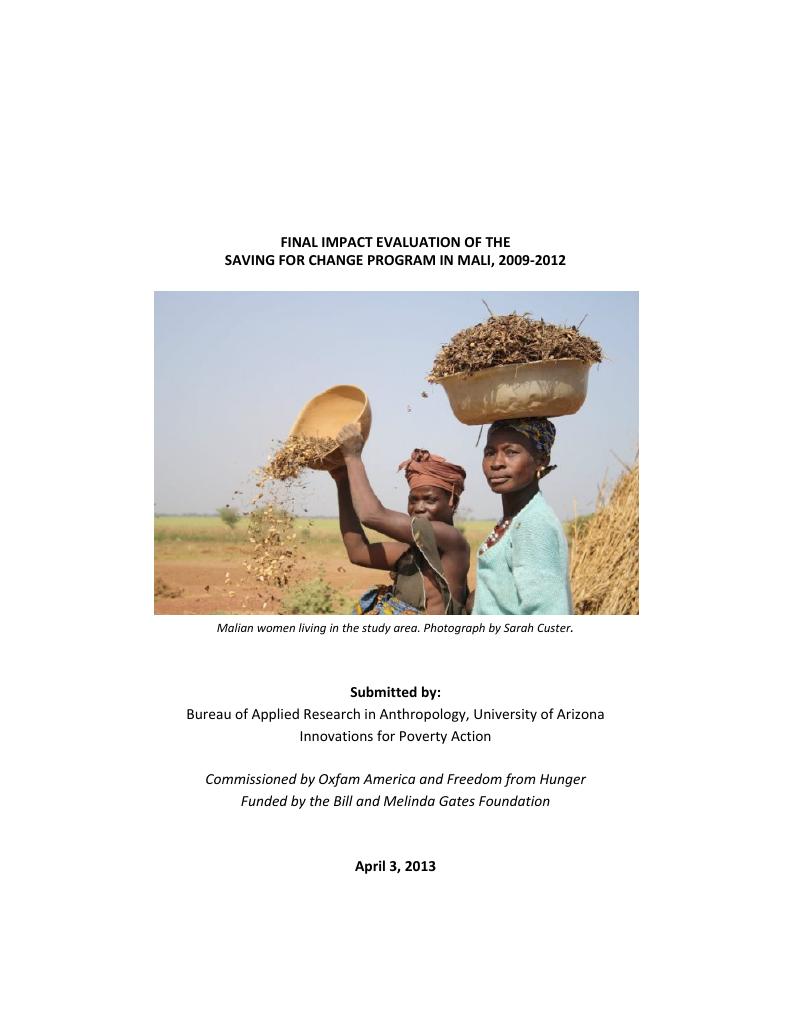Studie
Final Impact Evaluation of the Saving for Change Program in Mali, 2009-2012
The Saving for Change program, which began in Mali in 2005, enables women to organize simple self‐managed savings and credit groups. The program is meant to provide a locally appropriate tool for villagers to manage their finances and to reach populations rarely served by formalized institutional lenders. At weekly meetings, each woman contributes a mutually agreed upon savings amount to a communal fund, which grows in aggregate size each time the group meets. When a woman needs a loan, she proposes the desired amount and intended purpose to the group. The group collectively discusses whether there are enough funds and how to divide funds and prioritize requests. Loans must be repaid with interest, at a rate set by the members. The commitment of regularly saving in a group mobilizes greater savings than each woman could feasibly save individually. Each group manages its own funds that are mobilized entirely from the internally generated savings with no matching or external loans provided. At a predetermined annual date, the group divides the entire fund among members in a process termed the ‘share‐out.’ Each member receives all her savings plus a share of the income from interest on loans made to members over the year, fines for missing payments and meetings, and the income generating activities carried out by the group proportionate to the amount she saved over the year. The annual return on savings is 30% to 40% or more. The overall research objectives were: to understand the role of SfC within the context of larger household livelihood strategies and existing forms of savings and credit in Mali, better understand who participates in the program and why, provide rigorous evidence on the socioeconomic impacts of the SfC program on the lives of the people in the study region, and discern the relative merits of two different program replication strategies (structured and organic) to see if the cost of providing additional training and support to the volunteer replicating agents through structured replication yielded higher levels of outreach and program success as compared to providing replicating agents with informal one‐on‐one training through organic replication.
